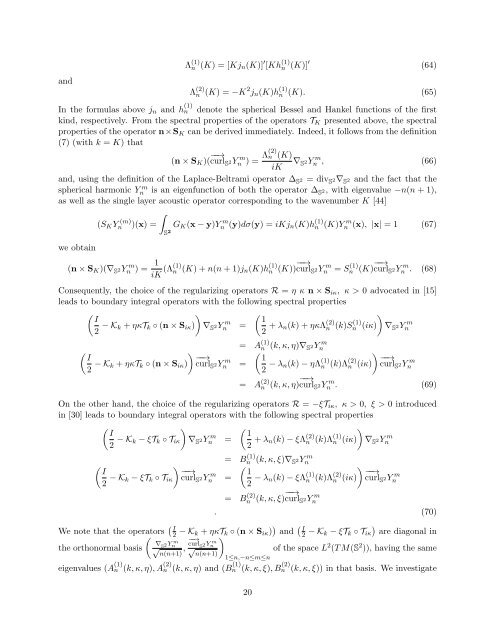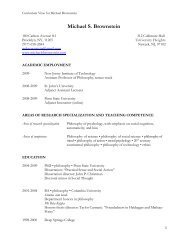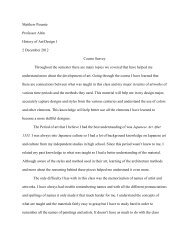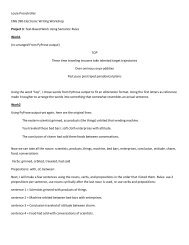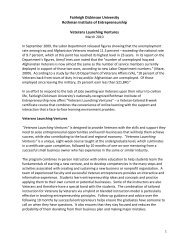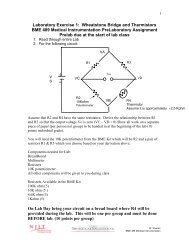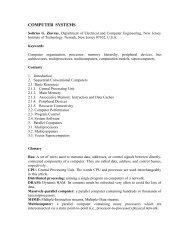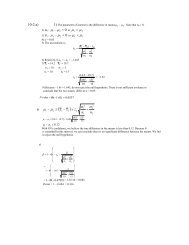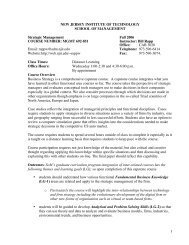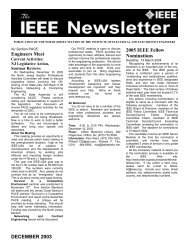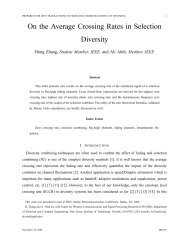Well-conditioned boundary integral formulations for the ... - Njit
Well-conditioned boundary integral formulations for the ... - Njit
Well-conditioned boundary integral formulations for the ... - Njit
Create successful ePaper yourself
Turn your PDF publications into a flip-book with our unique Google optimized e-Paper software.
and<br />
Λ (1)<br />
n (K) = [Kj n (K)] ′ [Kh (1)<br />
n (K)] ′ (64)<br />
Λ (2)<br />
n (K) = −K 2 j n (K)h (1)<br />
n (K). (65)<br />
In <strong>the</strong> <strong>for</strong>mulas above j n and h (1)<br />
n denote <strong>the</strong> spherical Bessel and Hankel functions of <strong>the</strong> first<br />
kind, respectively. From <strong>the</strong> spectral properties of <strong>the</strong> operators T K presented above, <strong>the</strong> spectral<br />
properties of <strong>the</strong> operator n×S K can be derived immediately. Indeed, it follows from <strong>the</strong> definition<br />
(7) (with k = K) that<br />
(n × S K )( −−→ curl S 2Yn m ) = Λ(2) n (K)<br />
iK ∇ S 2Y n m , (66)<br />
and, using <strong>the</strong> definition of <strong>the</strong> Laplace-Beltrami operator ∆ S 2 = div S 2∇ S 2 and <strong>the</strong> fact that <strong>the</strong><br />
spherical harmonic Yn m is an eigenfunction of both <strong>the</strong> operator ∆ S 2, with eigenvalue −n(n + 1),<br />
as well as <strong>the</strong> single layer acoustic operator corresponding to <strong>the</strong> wavenumber K [44]<br />
∫<br />
(S K Y n (m) )(x) = G K (x − y)Yn m (y)dσ(y) = iKj n (K)h (1)<br />
n (K)Yn m (x), |x| = 1 (67)<br />
S 2<br />
we obtain<br />
(n × S K )(∇ S 2Yn m ) = 1<br />
iK (Λ(1) n (K) + n(n + 1)j n (K)h (1)<br />
n (K)) −−→ curl S 2Yn m = S n<br />
(1) (K) −−→ curl S 2Yn m . (68)<br />
Consequently, <strong>the</strong> choice of <strong>the</strong> regularizing operators R = η κ n × S iκ , κ > 0 advocated in [15]<br />
leads to <strong>boundary</strong> <strong>integral</strong> operators with <strong>the</strong> following spectral properties<br />
( ( )<br />
I 1<br />
2 − K k + ηκT k ◦ (n × S iκ ))<br />
∇ S 2Yn m =<br />
2 + λ n(k) + ηκΛ (2)<br />
n (k)S n<br />
(1) (iκ) ∇ S 2Yn<br />
m<br />
( ) I −−→<br />
2 − K k + ηκT k ◦ (n × S iκ ) curlS 2Yn m =<br />
= A (1)<br />
n (k, κ, η)∇ S 2Yn<br />
m ( 1<br />
2 − λ n(k) − ηΛ (1)<br />
n (k)Λ (2)<br />
n (iκ)<br />
) −−→ curlS 2Yn<br />
m<br />
= A (2)<br />
n (k, κ, η) −−→ curl S 2Yn m . (69)<br />
On <strong>the</strong> o<strong>the</strong>r hand, <strong>the</strong> choice of <strong>the</strong> regularizing operators R = −ξT iκ , κ > 0, ξ > 0 introduced<br />
in [30] leads to <strong>boundary</strong> <strong>integral</strong> operators with <strong>the</strong> following spectral properties<br />
( )<br />
( )<br />
I 1<br />
2 − K k − ξT k ◦ T iκ ∇ S 2Yn m =<br />
2 + λ n(k) − ξΛ (2)<br />
n (k)Λ (1)<br />
n (iκ) ∇ S 2Yn<br />
m<br />
( I<br />
2 − K k − ξT k ◦ T iκ<br />
) −−→ curlS 2Y m n =<br />
= B n<br />
(1) (k, κ, ξ)∇ S 2Yn<br />
m ( 1<br />
2 − λ n(k) − ξΛ (1)<br />
n (k)Λ (2)<br />
n (iκ)<br />
) −−→ curlS 2Yn<br />
m<br />
= B n<br />
(2) (k, κ, ξ) −−→ curl S 2Yn<br />
m<br />
. (70)<br />
We note that <strong>the</strong> operators ( I<br />
2 − K k + ηκT k ◦ (n × S iκ ) ) and ( I<br />
2 − K )<br />
(<br />
k − ξT k ◦ T iκ are diagonal in<br />
∇<br />
<strong>the</strong> orthonormal basis S 2 Yn<br />
√ m −−→<br />
)<br />
curl<br />
, S 2 Yn<br />
√ m of <strong>the</strong> space L 2 (T M(S 2 )), having <strong>the</strong> same<br />
n(n+1) n(n+1)<br />
1≤n,−n≤m≤n<br />
eigenvalues (A (1)<br />
n (k, κ, η), A (2)<br />
n (k, κ, η) and (B n (1) (k, κ, ξ), B n<br />
(2) (k, κ, ξ)) in that basis. We investigate<br />
20


